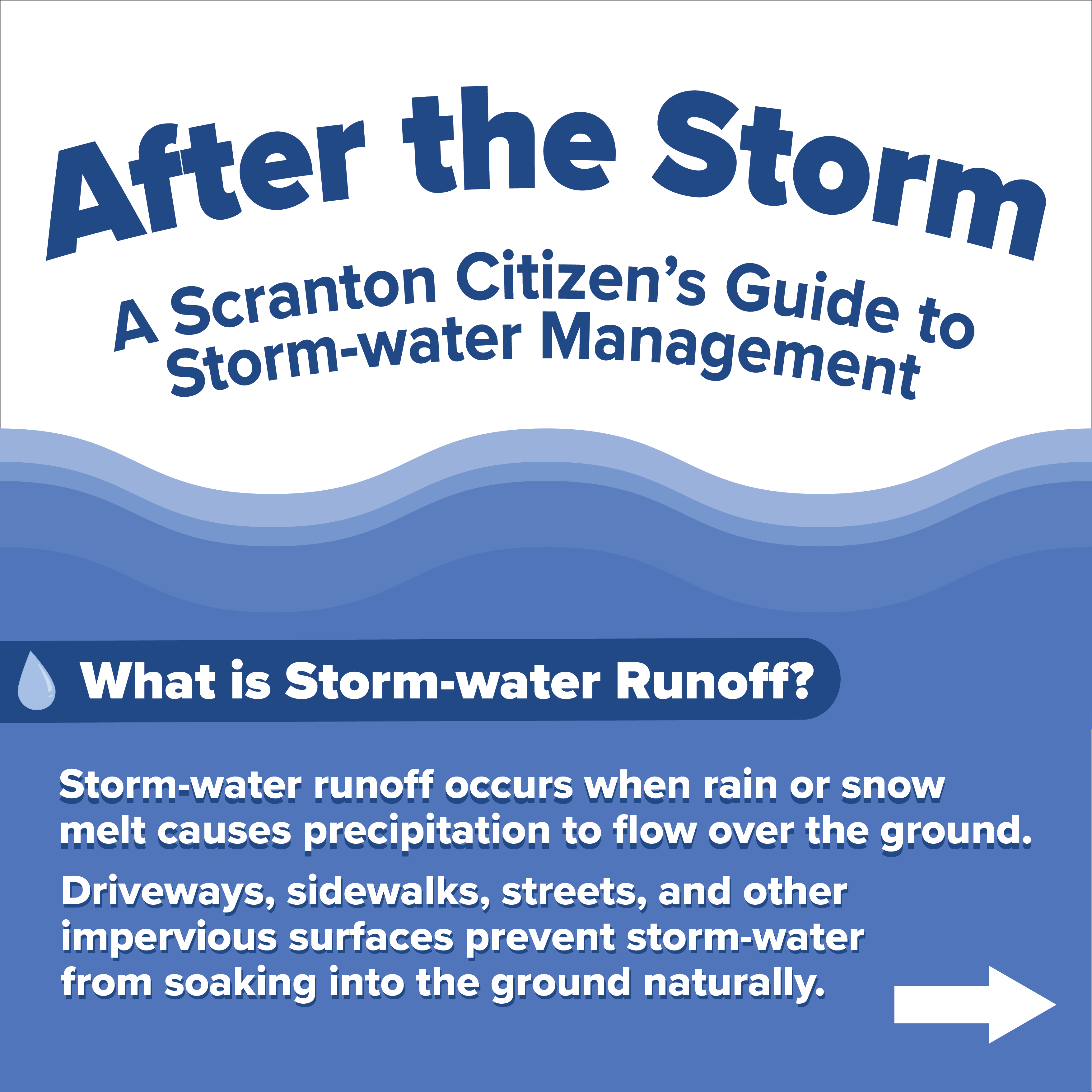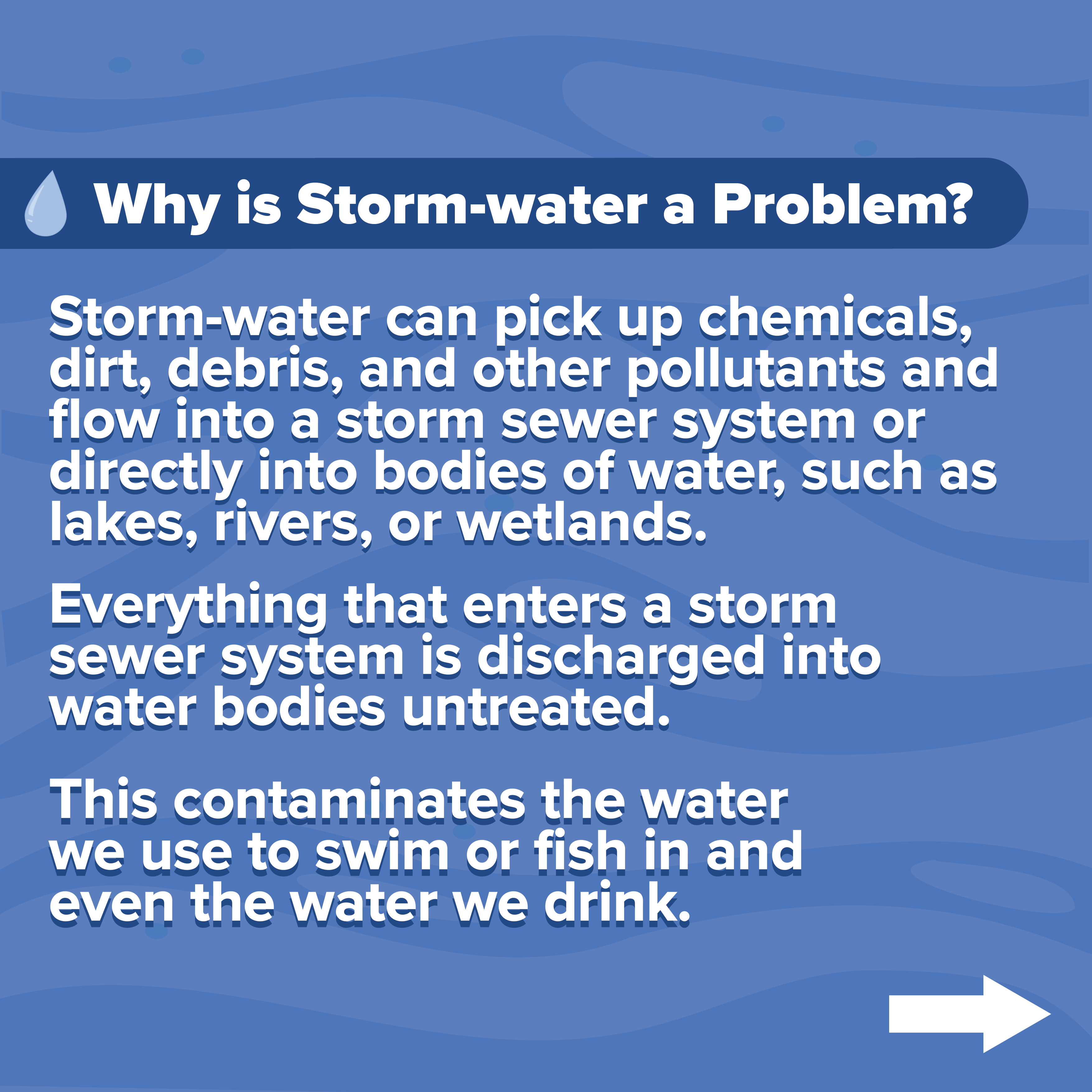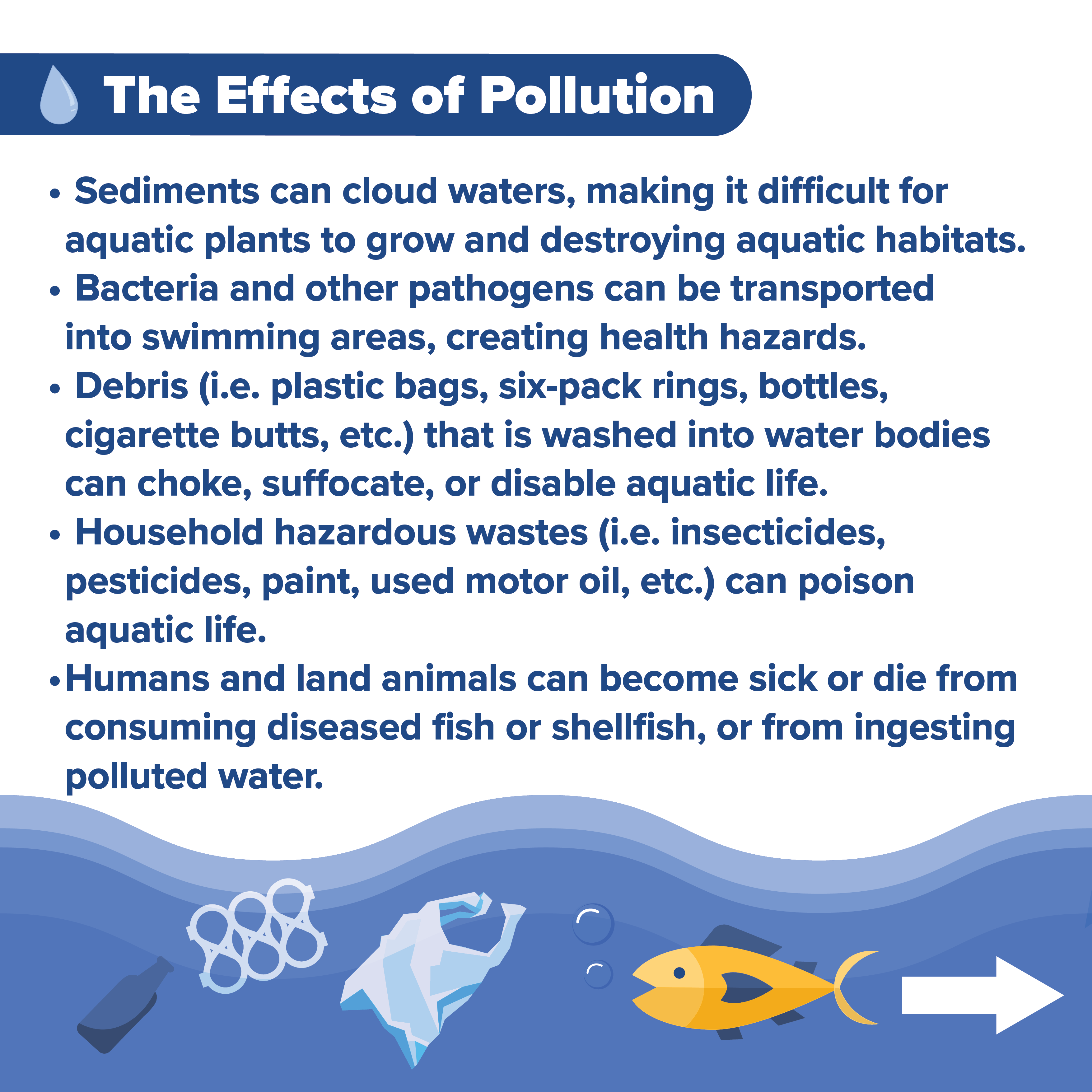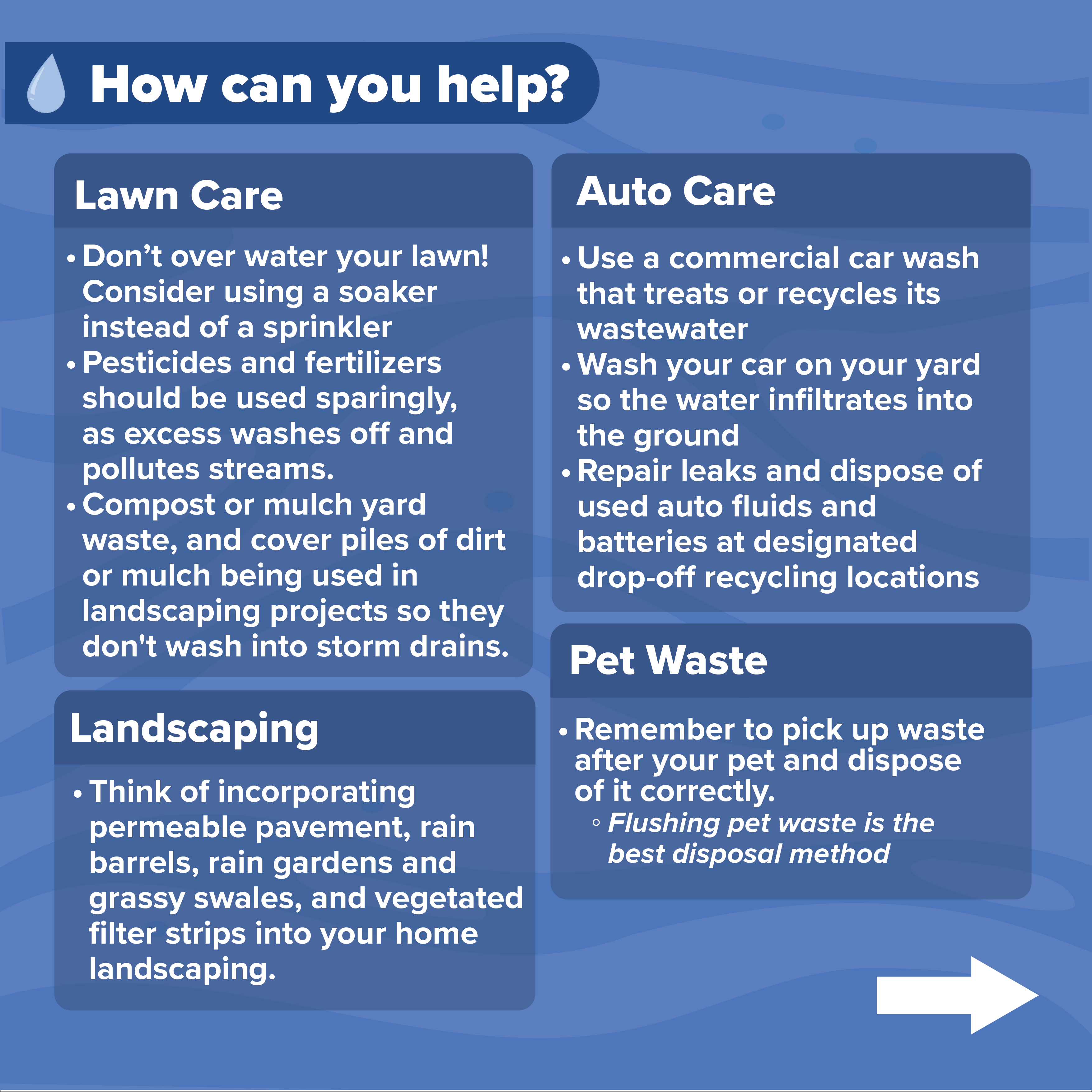After the Storm: A Scranton Citizen’s Guide to Storm-water Management
What is Storm-water Runoff?
Storm-water runoff occurs when rain or snowmelt causes precipitation to flow over the ground. Driveways, sidewalks, streets, and other impervious surfaces prevent storm-water from soaking into the ground naturally.
Why is Storm-water a Problem?
Storm-water can pick up chemicals, dirt, debris, and other pollutants and flow into a storm sewer system or directly into bodies of water, such as lakes, rivers, or wetlands. Everything that enters a storm sewer system is discharged into waterbodies untreated. This contaminates the water we swim in, fish in, or even drink.
The Effects of Pollution
Pollution can adversely affect people, animals, fish, and plants.
- Sediments can cloud waters, making it difficult for aquatic plants to grow. It can also destroy aquatic habitats.
- Excess nutrients transferred from storm-water runoff can cause algae blooms. When algae die, they sink to the bottom of the body of water and decompose. This decompostion process removes oxygen from the water, creating low dissolved oxygen levels that aquatic organisms and fish cannot survive in.
- Bacteria and other pathogens can be transported into swimming areas, creating health hazards.
- Debris such as plastic bags, six-pack rings, bottles, and cigarette buts that are washed into waterbodies can choke, suffocate, or disable aquatic life.
- Household hazardous wastes like insecticides, pesticides, paint, solvents, used motor oil, and other auto fluids can poison aquatic life. Humans and land animals can become sick or die from eating diseased fish and shellfish or from ingesting polluted water.
- Polluted stormwater affects drinking water sources, which increases risks to human health along with increasing the costs to treat the water.
Storm-water Pollution Solutions
Residential Auto Care
- Use commerical car wash that treats or recycles its wastewater.
- Wash your car on your yard so that the water infilitrates into the ground.
- Repair leaks and dispose of used auto fluids and batteries at the designated drop-off or recycling locations.
Residential Lawn Care
- Don’t overwater your lawn. Consider using a soaker hose instead of a sprinkler.
- Pesticides and fertilizers should be used sparingly, as excess washes off and pollutes streams. Use organic mulch being used in landscaping projects so that they don’t wash into storm drains.
Residential Septic Systems
- Inspect your system every three years and pump the tank as necessary (3-5 years.)
- Don’t dispose of household hazardous waste in sinks or toilets
Construction
- Divert stormwater away from disturbed or exposed areas of the construction site.
- Install silt fences, vehicle mud removal areas, vegetative cover, and other sediment and erosion controls and properly maintain them.
- Minimize areas disturbed during construction projects, and seed and mulch bare areas as soon as possible.
Commercial
- Sweep up litter and other debris from sidewalks, driveways, and parking lots.
- Cover grease storage and dumpsters and keep them clean to avoid leaks.
- Report chemical spills to the local hazardous waste cleanup team.
Residential Landscaping
- Think of incorporating permeable pavement, rain barrels, rain gardens and grassy swales, and vegetated filter strips into your home landscaping.
Automotive Facilities
- Clean up spills immediately and properly dispose of cleanup materials.
- Provide cover over fueling stations, and design facilities for spill containment.
- Properly maintain fleet vehicles to prevent oil, gas, and other discharges from being washed into local waterbodies.
- Install and maintain oil/water separators.
For more information about storm-water management and illicit discharges, please visit scrantonpa.gov and epa.gov
Information on this guide sourced from epa.gov






